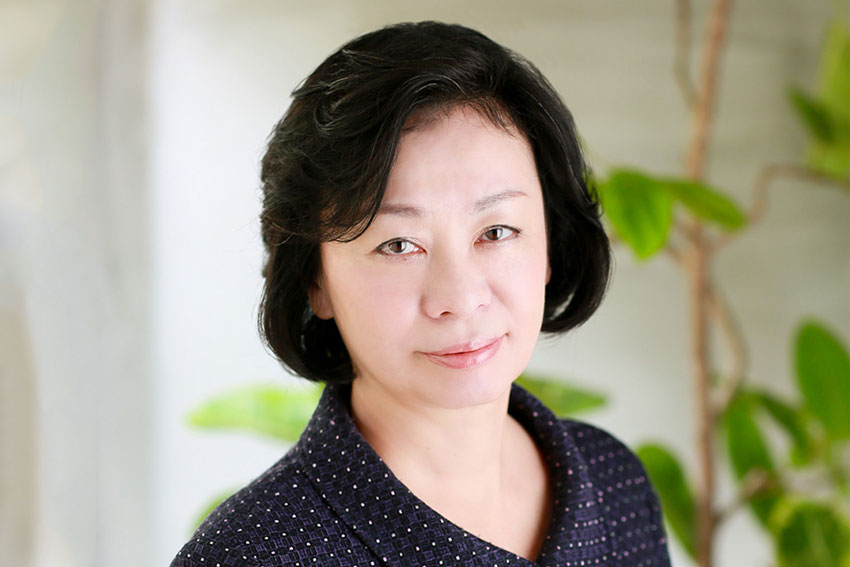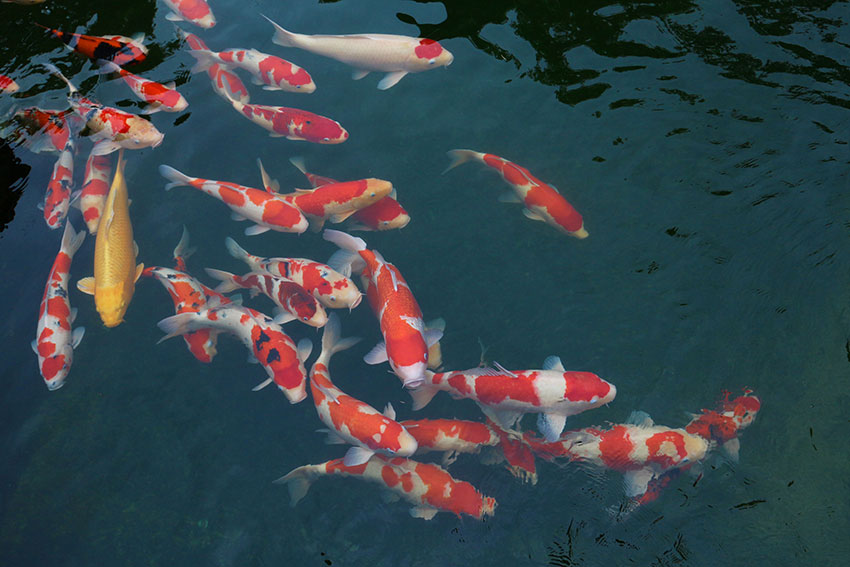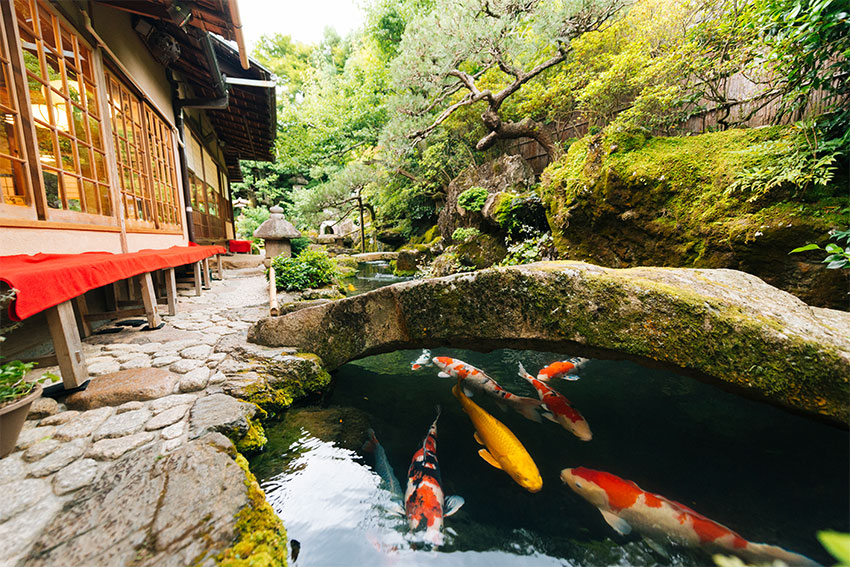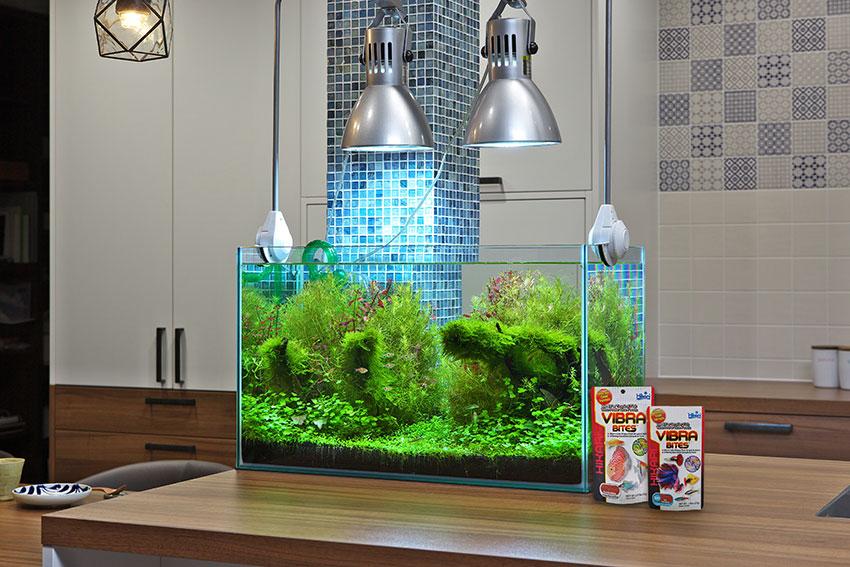In this interview, Michiko Kamihata, CEO of Kamihata Fish Industry Group, shares how the company is championing Japan’s ornamental fish heritage — from pioneering probiotic koi food to sustainable breeding practices — and expanding their global footprint to over 70 countries, all while staying true to their family philosophy of innovation rooted in tradition.

Japan is known as a country deeply rooted in nature, and this is reflected in its unique pet culture. For example, the Japanese-bred koi carp is known throughout the world for its beautiful colors. Bred carefully for centuries, they are almost living works of art. For this interview, we spoke with President Michiko Kamihata of Kamihata Fish Industry Group, a Japanese market leader in all things ornamental fish, who has been raising Koi for over 140 years in Japan and currently produces and sells Hikari®, a world-class brand of Nishikigoi and other ornamental fish foods.
How would you define the unique factors of Japanese pet culture, and what makes Japanese koi fish so well-known around the world today?
Keeping ornamental fish and other pets has a long history in Japan as well as in Europe and the United States, and has developed into a unique culture of ornamental fish keeping that is different from that of the West. Specifically, Medaka, Goldfish, and Nishikigoi are “traditional” ornamental fish, but these species have been improved and developed, and now occupy a very large market. What all of these fish have in common is that killifish, goldfish, and koi were originally simple fish that lived in nature, but over a long period of time they were crossbred and selected to become more beautiful. Nishikigoi was discovered in Niigata, Japan, and the mutation was used as the basis for breeding by the Japanese. It was eventually accepted throughout the world and became a uniquely Japanese culture. I believe that the unique nature of Japanese ornamental fish breeding, rooted in this Japanese culture, and the insatiable pursuit of beauty in harmony with nature, is what makes Japan unique.
This is a value system that originated in Japan, but is now being “re-exported” to Europe, the United States, and other Asian countries. Nishikigoi, in particular, is now the best-selling ornamental fish in the world, and as a result, Japan is the world's largest exporter of ornamental fish. The importance of the Nishikigoi culture, or to put it another way, the high value of exporting Nishikigoi overseas, is strongly recognized by the Ministry of Agriculture, Forestry and Fisheries (MAFF), and Nishikigoi has been selected as one of the country's “priority export commodities”. In other words, Nishikigoi is positioned as an important export industry, just like the famous Japanese “Wagyu” beef.
One of the biggest challenges Japan is facing is the demographic decline. It is not the oldest country in the world, but it also has a negative birth rate. This is putting a lot of pressure on the country, including the looming threat of a shrinking market and a labor crisis. How is your company reacting to these challenges, and to what extent do you think Japanese companies need to look overseas to secure long-term success?
Of course, the decline in the domestic population is a major challenge for the ornamental fish industry. However, the domestic market for ornamental fish keeping has actually been maintained, and in fact, our sales have continued to increase both domestically and internationally. I believe this is due to the fact that ornamental fish can be kept and enjoyed by all genders of all ages, regardless of generation. There are a variety of options for keeping ornamental fish, from small aquariums to large ponds, and they can be enjoyed and healed regardless of the residential environment. This is a big advantage for the aging population. I believe that this is true not only in Japan but also in other countries where the population is aging as well.

We saw in our research that export sales values have doubled, from USD 30 million to USD 60 million. How do you account for the huge growth in the popularity of ornamental fish?
One very core reason could be the growth of the Asian market and people's passion to further understand the value of Nishikigoi. Many people, captivated by Nishikigoi, have come to Japan to see with their own eyes how Nishikigoi are bred and to buy Nishikigoi that have been carefully grown by their breeders. I think this is a turning point. As a result of accepting this trend and placing more emphasis on overseas marketing, the export of Nishikigoi to other countries has greatly expanded as an industry.
Currently, Nishikigoi shows are held in Thailand, the Philippines, China, Vietnam, Indonesia, Malaysia, Myanmar, England, the Netherlands, France, and the United States, among other places around the world. Dealers want to be number one in their own Nishikigoi market, so they come directly to Japan to buy. These dealers also want to keep their Koi the same way they are used in Japan for the best results, and we feel that this has resulted in a significant expansion of our Koi food exports.
We’ve heard today that the koi fishing industry is experiencing a period of growth. Your company has recently expanded overseas. Is there a certain overseas sales ratio that you would like to achieve, and are there any strategies you would like to pursue to achieve your overseas sales goals?
As you mentioned earlier, sales have doubled and have tripled in the last 10 years. In order to win the Nishikigoi Show, we need to feed the fish the best. Our “Hikari®” brand plays that role. At Hikari®, we respect the Japanese ornamental fish culture I just described, and we strive to develop products that are truly needed by the people who raise, sell, and breed ornamental fish, as well as the fish themselves. Our goal is to create food that brings about more beautiful and healthier growth. The resulting products have a global appeal, and as a result, the same recipes are sold all over the world. However, since popular fish species and breeding styles may differ slightly from country to country, in recent years we have begun to develop products exclusively for overseas markets. As a result, the ratio of product development is about 6 in Japan and 4 overseas.
Even when it comes to ornamental fish food, we have about 300 different formulas, or recipes. This may come as a surprise to you, but considering the variety of ornamental fish, their various life stages, and the purposes for which they are kept, we believe that this variety is necessary and, from our point of view, a natural result.
Ornamental fish are kept with great care as an important part of nature and as a member of the family, so there is a strong demand for food that not only has good performance, but is also truly safe and secure. Our products are produced and managed directly in our own factories, and as a result, we were the first ornamental fish food manufacturing plant in Japan to acquire ISO 22000 certification.
In summary, we have developed products based on Japanese culture, have always been mindful not only of performance but also of safety and security, and have tested our products ourselves.

With your Hikari fish food, you were the first company to incorporate probiotics into fish food, which is used by champion breeders in the All Japan Nishikigoi Show, going all the way back to 2003. What are some of the specific benefits of the probiotics in this food?
As you mentioned, ®Hikari's probiotic technology dates back to 2001. ®Saki-Hikari and the “Hikari-Germ™ Bacteria” in ®Saki-Hikari became a worldwide hit as the “world's first probiotic food for ornamental fish” and has become a de facto standard that is essential for raising beautiful Nishikigoi.
Hikari-Germ™, which are live bacteria, are known to help Koi digestion and absorption to help improving growth, break down feces to control water pollution, suppress pathogens to help reducing susceptibility to disease, and help maintain Koi's health and immunity.
®Saki-Hikari and Hikari-Germ™ are representative products of our Brand, but they are only one of the products created as part of our product philosophy, and new technologies and concepts are concentrated in the new products that have been introduced one after another. For example, we are developing new foods that contain a mixture of several herbs to help maintain the health of fish.
In addition to your fish feed business, you also have your tropical fish breeding business. We saw that recently, you were able to successfully breed the black-banded angelfish, a fish species rarely bred in captivity. In addition to your achievement, you’ve highlighted the possibility of exporting these fish overseas. What kind of role do you believe your fish breeding business can play in conservation as well as exports?
This project was started by my father, as a founder of the Group, and the initial goal was to preserve the species. The project began in Kagoshima, Japan, where we attempted to breed rare Marine species. Collecting wild fish is prohibited in Hawaii, so we attempted to breed with the fish we had on hand. Kamihata Fish Industry Ltd. has many technicians who love fish, and as a result, they have succeeded in breeding not only common fish species but also a series of species that were previously considered difficult to captive breed such as the Black Banded Angel.
We place significant importance on living with and loving nature. We consider how we can provide people with beautiful fish that coexist with nature.
In recent years, other countries have gradually tightened regulations on the collection and sale of wild fish from the standpoint of environmental protection, and I feel that this is a correct trend. However, I believe that it is also important to nurture a love of nature by raising beautiful fish as a pet. I believe that one solution to this is to breed fish ourselves in a sustainable manner and deliver them to our customers.
Another important aspect of the breeding project is to support food product development. Since we have our own factories, we are able to quickly create and test prototypes of new formulations created by our research team. The prototypes are then tested in the field at the fish farms and import centers of our group company, Kambata Fish Industry Ltd. and the results are fed back to us. Through this process, our products are improved on a daily basis, and we are able to deliver even better products to our customers.

Your company has a number of partnerships and distribution agreements with foreign brands. What is it about Kamihata and your group that makes you the perfect partner for foreign brands who are looking to access the Japanese market? Looking forward to hearing from you. Are you interested in expanding your international partnerships?
We are not actively looking for partnerships; however, we often get referenced from trusted distributors, so there is no need to actively explore. However, although we have the confidence to produce the best food, there are still some areas that we do not have any capabilities in. This is why we have partnerships, particularly in the US and European markets. If an opportunity for a partnership presented itself, we would consider it. If the philosophy and mission of both companies are the same, I think we can build on that.
In terms of branding, production of Hikari® Brand frozen food has started overseas. This is done in a factory we’ve established in Indonesia. In Japan, there are limitations to the procurement of materials such as raw blood worms, mosquitoes, and shrimps. Since they need to be cleaned and frozen right after the harvest, we established our factory in Indonesia to localize production.
Looking to the future, which countries are you interested in focusing on?
As for which countries to focus on, we do not have a clear target. We currently export our products to 70 countries and regions around the world, and our main markets of the United States, Southeast Asia, and Europe all continue to grow. We are not only expanding our business overseas to contribute to sales, but also to increase awareness of the “Hikari®” brand to establish it as a global brand in Ornamental Fish Business.
In terms of strategic planning, this company is not a top-down organization, but a bottom-up organization where employees can express their opinions. I am not the type of person who makes plans so rigidly. I make policies with the input of my managers, but I make the final management decisions.
Imagine that we come back in 2030 and have this interview again. What goals or dreams do you hope to achieve by the time we come back for that new interview?
I will continue to serve as president for a few more years, after which my daughter will take over. I inherited the business from my father, who often told me, "Don’t stray from the core business, but don’t just stick to it either." I believe he meant that I should not cling to the current way of doing things but continue to take on new challenges. Guided by those words, I have pursued new initiatives in my own way. Even when my daughter takes the helm, I hope she will uphold this philosophy, communicate effectively with everyone, and create an environment where employees can work with satisfaction.
For more information, please visit their website at: https://www.kamihata.com/en/
0 COMMENTS